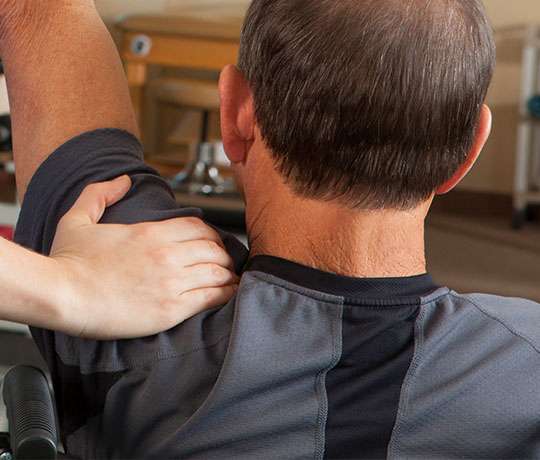Post-traumatic stress disorder, or PTSD, is a mental health disorder that develops after experiencing or witnessing a traumatic event. Post-traumatic stress disorder can affect both children and adults. Events that can lead to PTSD include the following:
- Being involved in a vehicle crash, terrorist attack, or natural disaster.
- Being abused, harassed, bullied, or violently attacked.
- Seeing other people being injured or killed.
- Being diagnosed with a life-threatening condition.
- Losing someone close to you in an upsetting circumstance, or learning that traumatic events have affected someone close to you.
Intrusive memories, avoidance, negative changes in thinking and mood, and changes in physical and emotional reactions are the four main types of symptoms experienced by those with PTSD. These symptoms can drastically affect a person’s ability to participate in everyday life.
We’d like to take a brief look at animal-assisted interventions (AAI) and PTSD based on existing research. Public awareness of PTSD is often in the context of combat veterans, and much of the research into AAI and PTSD has been conducted in this population. However, PTSD can be present in other forms and in other populations.

Service Animals and PTSD
Research supports the use of service dogs to decrease symptoms and increase quality of life for those with PTSD. Psychiatric service animals are defined as those individually trained to do work or perform specific tasks for people with mental health disabilities, such as PTSD. Some of these tasks include waking a person from nightmares, leading an individual to a building exit during an anxiety attack, grounding an individual through nudging, pawing, or leaning, and bringing medication to a person on command.

In a pilot study conducted by HABRI, the effects of service dogs on veterans with PTSD were explored. Compared to veterans without a service dog, veterans with PTSD paired with a service dog were found to have the following differences:
- Lower overall PTSD symptom severity
- Increased ability to cope with flashbacks and anxiety
- Decreased frequency of nightmares
- Decreased incidences of sleep disturbance
- Lower overall anxiety, depression, and anger
- Higher levels of companionship and social integration
- Decreased social isolation
- Increased ability to participate in activities outside of the home
- Increased levels of resilience and overall life satisfaction
- Decreased use of prescription drugs for anxiety, sleep, and pain
Bridging the Gap
While providing a service dog to every individual with PTSD may seem like the answer to helping individuals with this diagnosis, it’s not that simple. Service dogs are in high demand and cannot become immediately available to every individual. It takes about two years to train a service dog, and it costs $20,000 to $30,000 to train a single psychiatric service dog; resources are not readily available to allow training of service dogs for every single person who could benefit from them. Therefore, alternative options should be explored. AAI supplied by volunteers with therapy animals is another evidence-based way to provide short-term benefits to numerous individuals with PTSD.
Therapy animals can be incorporated into PTSD treatment in a variety of ways. They can be present during therapy sessions with mental health providers, or can provide animal-assisted activities during visits to doctors’ offices, foster care programs, or assisted living facilities. A systematic literature review by Dr. Marguerite O’Haire collected evidence supporting the use of animal-assisted activities for individuals with PTSD. Studies found that AAI for individuals with PTSD can have the following effects:
- Reduce depression.
- Reduce symptom severity.
- Reduce anxiety.
- Act as a comforting reminder that danger is no longer present.
- Facilitate social interactions and reduce loneliness.
- Create a positive external locus of attention.
- Increase oxytocin secretion, thereby reducing arousal and anxiety.
This research suggests that AAI offered by screened therapy animal teams like those registered by Pet Partners are a feasible option to assist clients with PTSD.

Pet Partners Resources on AAI and PTSD
Our continuing education course Working with Veterans highlights strategies that can be used to effectively interact with a population that regularly experiences PTSD symptoms. Visit our Online Education page for more information and to sign up.
Our partnership with Veterans Administration is designed to bring therapy animals and the benefits of animal-assisted interventions to Veterans Health Administration facilities, which may include the opportunity to work with veterans who are receiving treatment for PTSD. This partnership allows for the option of registered therapy animals other than dogs visiting VHA facilities. Registered Pet Partners teams can learn more about this partnership and how to begin working with VHA facilities by searching for “veterans administration” in the Resource Library. VHA facilities interested in starting therapy animal visiting programs are encouraged to contact us for more information.

Our Animal-Assisted Crisis Response (AACR) training for registered Pet Partners volunteers provides education in mental health first aid and strategies for interacting with people who have experienced crisis that can also be helpful when providing AAI in contexts beyond crisis response. Visit our AACR page for more information.
If you work for a facility that would benefit from therapy animal visits to support clients with PTSD, we encourage you to post a volunteer opportunity. Pet Partners provides guidance for facilities on safe therapy animal visits during COVID-19.
PTSD Resources
Pet Partners supports the use of animal-assisted interventions as part of addressing mental health conditions, but we know that PTSD is multidimensional and benefits from a team treatment approach. The following resources provide more information about post-traumatic stress disorder symptoms, treatments, and support.
← Back to the blog

The US Department of Veteran Affairs says Post Traumatic Stress Disorder (PTSD) “is a mental health problem that some people develop after experiencing or witnessing a life-threatening event, like combat, a natural disaster, a car accident, or sexual assault.” PTSD is characterized by symptoms grouped into four main categories: intrusion or re-experiencing, avoidance, alteration in mood and cognition, and hyperarousal.
Using Psychiatric service dogs (PSD) is one way to help people suffering from PTSD. Psychiatric service animals are dogs specifically trained to help people with mental health disabilities like schizophrenia, anxiety, depression, bipolar disorder, and post-traumatic stress disorder. A PTSD service dog is a type of psychiatric service dog trained to do work and complete tasks to help mitigate the symptoms of PTSD.
In this post, we will identify six ways that a service animal can help people suffering from post-traumatic stress disorder and the tasks they perform to do so.
1. Reduce Suicidal Thoughts
Service dogs help reduce the symptoms of depression, which helps reduce suicidal thoughts and prevent suicide. Service animals can give a person a reason to rise out of bed, get some exercise, and take on the day. Having a dog as a companion can be therapeutic and help with feelings of loneliness and isolation. They also help reduce anxiety and other PTSD symptoms while improving a handler’s coping mechanisms. Overall, a service animal can help a handler gain confidence and freedom.
2. Mitigate Anxiety & Disrupt Anxiety Behaviors
Psychiatric service dogs are trained to recognize symptoms of anxiety and perform tasks to disrupt anxiety behaviors. This is an important way in which service dogs can help a handler with PTSD reduce anxiety.
There are several ways in which a service animal can mitigate anxiety. One task includes nudging, pawing, or licking the handler until they redirect their focus on the dog instead of on their anxiety.
A service dog can also help reduce anxiety whenever a handler is in public. A service dog is trained to provide a “cushion” between the handler and other people, which helps reduce anxiety and makes them feel safe while in public.
3. Interrupt Night Terrors
Night terrors are one form of the intrusion symptom. A service dog recognizes the signs of a handler experiencing a night terror and interrupts it. When the dog recognizes these cues, they wake the handler by nudging, licking, or lying on the chest. They can even turn on the lights to wake the handler and ensure they feel safe.
4. Perform Room Searches and Safety Checks
Hypervigilance is a key symptom of PTSD and is characterized by an extreme sensitivity to one’s surroundings and a sense that a presumed danger is lurking around the corner. To help mitigate this symptom, service dogs perform room searches or safety checks. This is where the dog goes into each room and then alerts the handler that the house is safe.
5. Help With Dissociation
Dissociation is a symptom of PTSD and can display itself in several ways, including flashbacks, a disconnection of the self, having a disconnection with time or feeling detached from reality.
When a handler is in a dissociative state, a service animal helps guide a handler to a safe place, an exit, back home or even to find a specific person.
Service animals can even help “ground” the handler to bring them back to reality. While in this state, a service dog can also use tactile stimulation or deep pressure therapy to help their handler.
6. Retrieve Medication and Other Alert Tasks
Service dogs are trained to remind handlers when it is time to take their medication and retrieve medications for them.
Some other alert tasks that service dogs perform are alerting a handler to an alarm, alert that someone is at the door, and remind them of routine tasks such as eating and sleeping.
A service dog is a nonjudgmental companion for someone with PTSD. Not only can these extraordinary dogs help mitigate the symptoms associated with PTSD, but they can also make it possible for sufferers to live more independently, be more self-sufficient, and improve their quality of life.
This post covers just a few ways a service dog can help people with PTSD. But there are many more tasks service dogs can perform which depend on each handler and their unique situation.
Are you, or someone you know, a veteran or first-responder who suffers from PTSD? Interested in applying for a service dog? Please visit New Life K9’s application page here.
Help save lives and donate to our cause!
New Life K9s places service dogs with veterans and first responders with PTSD at no cost to the veterans and first responders.
References
What is Post Traumatic Stress Disorder? American Psychiatric Association. Accessed December 19, 2020
https://www.psychiatry.org/patients-families/ptsd/what-is-ptsd
US Department of Veterans Affairs. VA.gov. Accessed December 20, 2020
https://www.ptsd.va.gov/
“The Four Types of Symptoms of PTSD” RWJBarnabas Health. Accessed December 20, 2020
https://www.rwjbh.org/treatment-care/mental-health-and-behavioral-health/conditions/post-traumatic-stress-disorder/the-four-types-of-symptoms-of-ptsd/
Maynard, Erin “Service Dogs. The ADA, and PTSD” Very Well Mind. Updated on September 17, 2020. Accessed December 20, 2020
https://www.verywellmind.com/the-problems-with-service-dogs-the-ada-and-ptsd-2797679
“The Most Important Task for a PTSD Service Dog for Veterans is Disrupting Anxiety” Purdue University. Science Daily. July 22, 2020. Accessed December 20, 2020
https://www.sciencedaily.com/releases/2020/07/200722142116.htm
Kerri E. Rodriguez, Megan R. LaFollette, Karin Hediger, Niwako Ogata, Marguerite E. O’Haire. “Defining the PTSD Service Dog Intervention: Perceived Importance, Usage, and Symptom Specificity of Psychiatric Service Dogs for Military Veterans” Frontiers in Psychology, 2020; 11
https://www.frontiersin.org/articles/10.3389/fpsyg.2020.01638/full
Tull, Matthew PHD “What Is Dissociation?” VerywellMind. July 19, 2020. Accessed December 21, 2020
https://www.verywellmind.com/dissociation-2797292
“Psychiatric Service Dogs” National Service Animal Registry. Accessed December 21, 2020
https://www.nsarco.com/qualify-psychiatric-service-dog.html#:~:text=A%20psychiatric%20Service%20Dog%20is,mitigate%20their%20handler’s%20psychiatric%25%2020disability.
“Comprehensive List of Service Dog Tasks” National Service Animal Registry. Accessed December 22, 2020
https://www.nsarco.com/ptsd-service-dog-tasks.html



